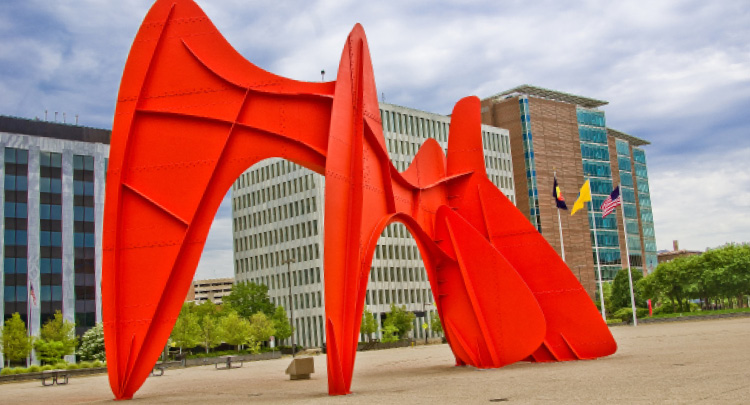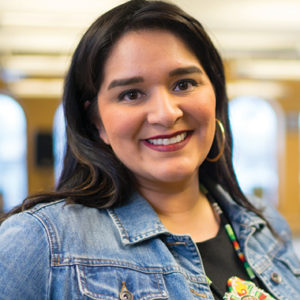Putting Economic Inclusion Data to Work in Grand Rapids



This past spring, the Johnson Center released a new report, underwritten by the W.K. Kellogg Foundation, examining data on economic inclusion in particular neighborhoods of Grand Rapids, Michigan. The Economic Inclusion in Grand Rapids Data Update looks at changes in economic inclusion between 2014 and 2018 in the city’s Neighborhoods of Focus — an area stretching across the west and southeast portions of the city, roughly John Ball Park on the city’s west side to Eastown and neighborhoods to the south of Wealthy Street.
Disaggregated data — data that can be broken down and examined based on different characteristics like racial and ethnic identity, gender identity, age, employment status, and so on — can be an incredibly powerful tool for community understanding and decision-making. Individual organizations and entire networks can use the same data to target their work, track progress, and ultimately create better outcomes for all.
We are always grateful to hear how people and organizations use data to further their missions — and we hope their ideas and efforts can inspire others, as well. Research manager Melyssa Tsai O’Brien recently spoke to Stacy Stout, director of equity and engagement with the City of Grand Rapids, to learn more about how the City is using the Economic Inclusion in Grand Rapids Data Update.
Melyssa Tsai O’Brien: What data from the Economic Inclusion in Grand Rapids Data Update report was of most interest to your organization?
Stacy Stout: What stuck out was something that we felt, and that the community was feeling — that we’re losing our African American population.
This report points to a number of reasons why: it’s measuring gentrification, lack of affordable housing, and equitable opportunities. It could also speak to the environment; whether or not our city is a welcoming environment for new residents, or even for those who have been here for generations but are being priced out, or who feel pushed out. Having the data affirm and reflect what we know anecdotally was heartbreaking and eye-opening for many, yet not shocking for others.
Right, and especially in the Neighborhoods of Focus featured in the report, where the housing costs were increasing at a faster rate than the City of Grand Rapids and Kent County. That leads right into our next question: how have you applied the data to your organization when making decisions?
This data happens to be greatly aligned to the City’s new strategic plan, which we adopted in April 2019. This data will be our baseline to measure progress and change.
The very first objective in the strategic plan is to embed equity throughout government operations. A key part of that work is to disaggregate all data to the furthest extent possible. In the past, the City would measure indicators primarily by wards; now we measure them by race, ethnicity, and gender identity. For geography we first ask, “is this a Neighborhood of Focus?” Now when someone at the City enters a budget request, for instance, we can ask “who is this impacting? Is it in a Neighborhood of Focus?” This allows us to really concentrate some of our intentionality in those neighborhoods of greatest need.
Interesting. Could you talk a little bit more about how this data informed the City’s budget or budget process?
Well, this year’s budget process was historic — we had to redo the budget about four times because of COVID and our changing revenue projections. But the data in this report — coming from 2018, so, pre-COVID — helped reinforce the importance of equity more than ever. This is about something more than a pandemic, and recovery will need to go deeper than ”returning to normal.” “Normal” wasn’t equitable; we can use this data to build back better as we recover from COVID-19.
This commitment is demonstrated in so many of our outreach programs.
We have a small contracts program where we invest anywhere from $2,000 to $10,000 to neighborhood groups or individuals primarily in the Neighborhoods of Focus. They don’t have to be an organization, per se, to do projects in their neighborhoods or communities — and that could be a cultural community or geographic community. For instance, there’s a conference going on right now [mid-September], the Southeast Grand Rapids Economic and Community Conference, organized by the Grand Rapids African American Community Taskforce — it’s these types of projects where we make investments.
We also work closely with neighborhood associations. We’re currently working in a large area that doesn’t have a neighborhood association and so over the last couple of years we’ve been helping to establish one. They just got their 501(c)(3) status. Outside those neighborhoods, we can help by providing tools, guides, taking calls. But we really concentrate on walking alongside associations in our targeted areas.
In fact, our work with the Johnson Center and GVSU’s Division of Inclusion & Equity to provide the Neighborhood Leadership Academy program was really the first time we facilitated direct capacity-building training and offered financial resources to neighborhood associations, standing up a new, community-led model. It used to be that many of these associations had a, “we’re watching you” approach, but now the dynamic is very much, “we’re here to listen, convene, and help. We see you. Welcome.”
How do you see your organization promoting inclusive growth and/or racial equity in Grand Rapids?
Using this data as our baseline, we can target economic, educational, and environmental programs to support communities that are hurting the most. One thing we’re doing is reimagining the incentives we offer to developers in order to leverage the equity outcomes we want to see. That includes utilization of minority- and women-owned businesses as subcontractors or direct contractors. And, importantly, we follow up to make sure they hold up their end of that bargain. We emphasize the importance of wealth creation in communities of color.
That’s also the goal of how we’re working across City departments, such as purchasing and engineering. We’ve doubled the number of Micro-Local Business Enterprises (MLBEs) registered to do business with the city in the last year. When we know an RFP is coming out, we can work with small businesses to get them ready to submit bids in a short turn-around. My office disaggregates the MLBEs by minority-, women-, and veteran-owned status.
The river restoration, for instance, is another major project we’re working on. We hired an equity analyst that is 100% dedicated to the river to make sure that equity and economic justice is embedded through all of it — through the governance model, through programming and outreach, design, all of that. We want to make sure that communities of color have a real chance to build wealth on that project through the actual land and water restoration, and as part of the business development along the river banks, as well. Yes, I want my Brown family to be able to kayak, but I also want to see Black and Brown people owning the businesses that I’m renting those kayaks from.
The last example I’ll share is that the City recently released the “Welcome Plan for Kent County,” a two-year project incorporating immigrant voices and aiming to make our area more welcoming for immigrants. We hope it will also serve to make Grand Rapids more welcoming for the people who already live here – many who have deep, multi-generational roots — but are being marginalized or facing challenges to keeping their homes and their community status.
So, what’s next for the City?
Well, pre-COVID, we were gearing up to create and release a new Master Plan for the City — something we haven’t done in about 20 years. We’ve updated the old plan here and there, but it hasn’t gotten an overhaul in a generation. We intend to get back to that work, ramping up our engagement efforts to find out what residents want to see in their neighborhoods, the roles they want to play. I believe that this report from the Johnson Center will inform that work by providing those key baseline metrics for us to grow against.
For me, I’m always gonna ask, “okay, but what does the African American community say? What does the Latino community say? What are the Neighborhoods of Focus feeling, what’s the vibe there?” We aren’t going to make progress without being deeply intentional about it. Our resources are finite, but our potential is limitless.